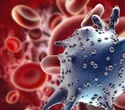New tool helps surgeons plan heart valve replacements with precision
Scientists at Queen Mary University of London and Barts Health have developed an innovative tool that simulates blood flow in the aorta, helping heart surgeons plan surgeries more precisely. The digital model, known as TAVR-AID, is unique because it creates a personalized digital twin of each patient's aorta, allowing doctors to test surgical approaches before performing an operation.
The simulation predicts how blood will flow after a valve replacement, guiding clinicians in decisions such as which valve to choose the best way to position it, and the potential outcomes of the surgery. This personalized approach can improve surgical planning and help avoid complications.
Lead inventor Professor Anthony Mathur, a Queen Mary researcher and Consultant Cardiologist & Co-Director for Research at Barts Health, explains: "TAVR-AID is not designed to replace human decision-making but to enhance it. We use CT scans to build a digital twin of the patient's aorta, and echocardiography to determine the severity of the stenosis we're treating. This allows us to simulate their blood flow."
He adds: "The AI model will use this simulation and the patient's health records to predict which valve to use, what size it should be, how we position it, and the risk of complications such as stroke, leaks, or device failure."
Replacing a heart valve is a delicate procedure, with the choice of valve and its replacement critical to ensuring proper blood flow and heart function. If done incorrectly, blood flow disruptions can damage the new valve. Surgeons must carefully consider factors like the size, shape, and angle of the aorta, as well as the patient's individual health needs.
The research was led by Professor Mathur, a Consultant Cardiologist and Co-Director of Research at Barts Health, and a researcher at Queen Mary University of London. The project also brought together a team of experts, cardiologists, surgeons, engineers, computer scientists, and patient representatives.
He continues: "The blend of clinical insight and technological skills is what makes our models sophisticated and state-of-the-art but also grounded in practical, real-world clinical requirements."
The invention is being taken forward by Queen Mary Innovation, the university's tech transfer office, who are looking for a commercial partner to help bring the technology to clinicians.
Lead inventor Professor Anthony Mathur, a Queen Mary researcher and Consultant Cardiologist & Co-Director for Research at Barts Health, explains: "TAVR-AID is not designed to replace human decision-making but to enhance it. We use CT scans to build a digital twin of the patient's aorta, and echocardiography to determine the severity of the stenosis we're treating. This allows us to simulate their blood flow."
He adds: "The AI model will use this simulation and the patient's health records to predict which valve to use, what size it should be, how we position it, and the risk of complications such as stroke, leaks, or device failure."
Replacing a heart valve is a delicate procedure, with the choice of valve and its replacement critical to ensuring proper blood flow and heart function. If done incorrectly, blood flow disruptions can damage the new valve. Surgeons must carefully consider factors like the size, shape, and angle of the aorta, as well as the patient's individual health needs.
The research was led by Professor Mathur, a Consultant Cardiologist and Co-Director of Research at Barts Health, and a researcher at Queen Mary University of London. The project also brought together a team of experts, cardiologists, surgeons, engineers, computer scientists, and patient representatives.
He continues: "The blend of clinical insight and technological skills is what makes our models sophisticated and state-of-the-art but also grounded in practical, real-world clinical requirements."
The invention is being taken forward by Queen Mary Innovation, the university's tech transfer office, who are looking for a commercial partner to help bring the technology to clinicians.
#ResearchChemistry, #ChemicalInnovation, #Science, #ScienceResearch, #ScientificResearch, #ResearchAndDevelopment, #ChemistryEducation, #ChemistryExperiments, #ChemistryLab, #ChemistryStudents, #ChemistryStudy, #OrganicChemistry, #InorganicChemistry, #PhysicalChemistry, #AnalyticalChemistry, #Biochemistry, #MaterialsChemistry, #TheoreticalChemistry, #AppliedChemistry, #MedicinalChemistry
Visit Our Website : researchchemistry.org
Nomination Link : researchchemistry.org/award-nomination/
Registration Link : researchchemistry.org/award-registration/
Member Link : researchchemistry.org/member-submission/
Contact Us: contact@researchchemistry.org
Social Media Links
Instagram : www.instagram.com/chemistryaward
Twitter : x.com/Chemistryaward
Pinterest : in.pinterest.com/chemistrymails




Comments
Post a Comment